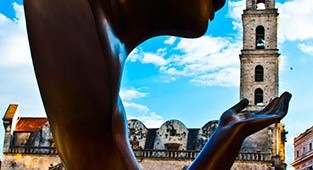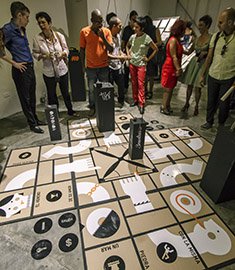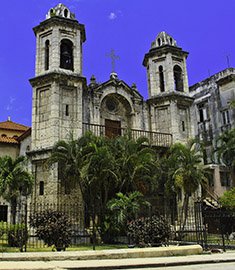
Museo del Ferrocarril LH  4
4
Opened on November 19, 2002, the Railway Museum is housed in the former Cristina railway station, headquarters of the Western Railway of Havana. Cuba was the sixth country in the world to develop a ra …

Iglesia del Espíritu Santo LH  4
4
Although considered by many the oldest church in Havana, a research by historian Pedro A. Herrera has proved otherwise. The original building, which was built as a hermitage in 1638 for freed slaves a …

Convento e Iglesia de Nuestra Señora de Belén LH  4
4
Made up of a church, a convent and a peculiar vaulted arch, this religious complex is the most extensive of those surviving in Old Havana. After the arrival in Havana of the first members of the Order …
 BaroqueAdmission: FreeOpen: 8am-6pm Mon-FriCompostela e/ Luz y Acosta, Habana Vieja
BaroqueAdmission: FreeOpen: 8am-6pm Mon-FriCompostela e/ Luz y Acosta, Habana Vieja 
Teatro Auditorium Amadeo Roldán LH  4
4
Opened on December 2, 1928, the Teatro Auditorium was created under the auspices of the Sociedad Pro-Arte Musical and thanks to the efforts of its director, María Teresa García Montes de Giberga (1880 …

Convento e Iglesia del Sagrado Corazón de Jesús e Ignacio de Loyola LH  4
4
Known by many as Iglesia de Reina, Cuba’s tallest and perhaps most beautiful church rises in the midst of the urban landscape as one of the most accomplished religious constructions in Cuba in terms o …
 EclecticOpen: 8am-noon, 3-6pm daily; Mass: 8am, 4.30pm Mon-Sat; 8am, 9.30am, 4.30pm SunReina (Avenida Simón Bolivar) entre Belascoaín (Padre Valera) y Gervasio
EclecticOpen: 8am-noon, 3-6pm daily; Mass: 8am, 4.30pm Mon-Sat; 8am, 9.30am, 4.30pm SunReina (Avenida Simón Bolivar) entre Belascoaín (Padre Valera) y Gervasio 
La Conversación Statue LH  4
4
The beautiful contemporary bronze sculpture titled ‘La Conversación’ looks out over Plaza San Francisco de Asís from atop a marble plinth in front of the entrance to the Lonja del Comercio. Made by Fr …

La Bodeguita del Medio LH  4
4
Back 1942, this well-known restaurant was a small grocery store. Its owner, Ángel Martínez, began to sell food as the number of customers increased. One day, journalist Leandro Garcia, a regular costu …

Seminario San Carlos y San Ambrosio (Real y Conciliar Colegio Seminario de San Carlos) LH  4
4
In 1689, Bishop Diego Evelino de Compostela founded San Ambrosio, an unpretentious school for boys, located on Tejadillo Street and adjacent to the Jesuit church under construction at the time. When t …
 BaroqueAdmission: FreeCuba e/ Chacón y Empedrado, Habana Vieja
BaroqueAdmission: FreeCuba e/ Chacón y Empedrado, Habana Vieja 
Universidad de La Habana LH  4
4
With Brother Tomás Linares del Castillo as its first rector, the first university in Cuba, the Real y Pontificia Universidad de San Gerónimo de La Habana, was created in 1728. After several reforms, t …
 EclecticL entre San Rafael y 27 de Noviembre
EclecticL entre San Rafael y 27 de Noviembre 
Casa de Las Tejas Verdes LH  4
4
The Casa de Las Tejas Verdes (literally, House of the Green Tiles) was designed by architect José Luis Echarte and built in 1926. It is unique in Cuba for being the only example of the German renaissa …
 OtherAdmission: n-a2 # 308, entre 3ra y 5ta
OtherAdmission: n-a2 # 308, entre 3ra y 5ta 












